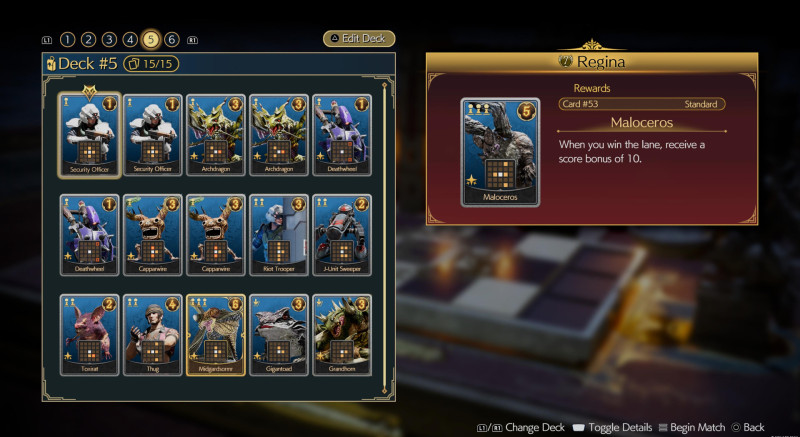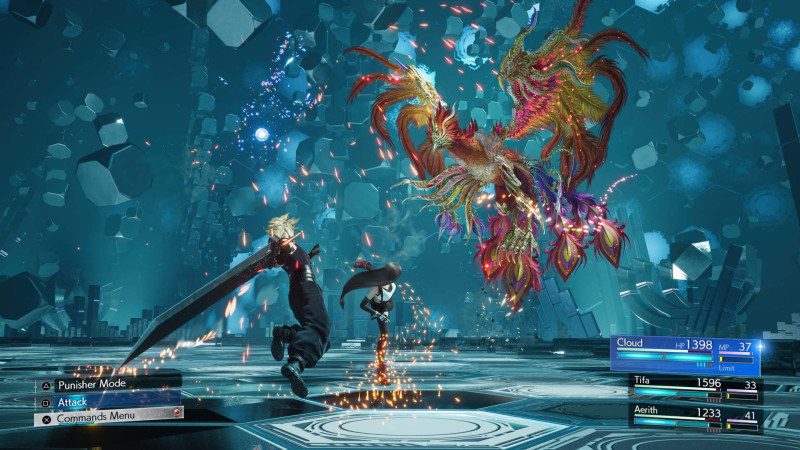London-based AI lab Stability AI has announced an early preview of its new text-to-image model, Stable Diffusion 3. The advanced generative AI model aims to create high-quality images from text prompts with improved performance across several key areas. The announcement comes just days after Stability AI’s…
The Friday Roundup – YouTube Tips and VideoStudio
How to Get Views on a Zero YouTube Channel I wanted to include a couple of YouTube specific video tutorials this week as we are still at the beginning of 2024. Getting started on YouTube is not too hard these days and there are a ton…
Fortnite Introduces Family-Friendly Lego Islands With ‘Raft Survival’ And ‘Obby Fun’

Epic Games and Lego unveiled Lego Fortnite, a brick-based survival game with crafting, combat, and more, back in December. Now, the companies have unveiled a new way to experience Lego in Fortnite: Lego Islands. Available today, Lego Islands is a family-friendly, all-ages play experience that sits alongside (and separate) from Lego Fortnite, and it’s kicking off with two islands.
The first is Lego Raft Survival. Created in Unreal Editor for Fortnite, Raft Survival “combines frenetic multiplayer problem solving with the classic Lego Pirates theme, as the infamous Blackbeard challenges players and their friends to stay afloat on a raft in unfriendly waters,” a press release reads. Players must survive on their raft against cannon balls shot from Blackbeard’s Barracuda ship, all while collecting wood and treasures as resources and building more rafts.
Here’s a look at Lego Raft Survival:
The second island available starting today is Lego Obby Fun. Epic Games calls it the first official Lego-themed obstacle course in Fortnite, stating it “offers a Lego-inspired take on climbing and problem solving through brick-built platforms designed by actual Lego designers and packed with hot dogs, pizzas, unicorns, and much more.”
Players are spawned randomly on a section of a course inspired by popular Lego themes, like Lego Friends, Lego City, Lego Ninjago, and Lego DreamZzz, and “the experience offers a different challenge each time to put their skills to the test, either solo or with friends.”
Here’s a look at Lego Obby Fun:
Epic Games says the Lego Fortnite journey, which began with Chapter 5 of Fortnite alongside Rocket Racing and Fortnite Festival, is just the beginning, with new world building, gameplay features, and Lego Style Outfits arriving in updates throughout the year.
Both Lego Raft Survival and Lego Obby Fun are now live in Fortnite.
For more, read about how Lady Gaga is now available in Fortnite, and then check out this partnership between Epic Games and Disney to bring the latter to Fortnite in a big way.
Are you going to check out these Lego Islands? Let us know in the comments below!
PlayStation Laying Off 900 Across Insomniac, Naughty Dog, Guerrilla, And More, Closing London Studio

Sony Interactive Entertainment has announced layoffs at various PlayStation first-party studios, including Insomniac Games (Marvel’s Spider-Man), Naughty Dog (The Last of Us Part II), Guerrilla Games (Horizon Forbidden West), and Firesprite. It is also closing London Studio, the team behind PlayStation VR’s Blood & Truth and VR Worlds. In a statement released by head of PlayStation Studios Hermen Hulst, he seems to cite overgrowth as the reason for the layoffs.
PlayStation’s Technology, Creative, and Support teams are also affected by these layoffs, according to Hulst. He writes, “These are in addition to some smaller reductions in other teams across PlayStation Studios.” These layoffs will result in an 8 percent reduction of staff, or around 900 people losing their jobs.
[embedded content]
“Our goal at PlayStation Studios has always been to make the best games for PlayStation fans, and our global community of studios represent some of the most creative and talented teams within the gaming industry,” Hulst writes in the statement. “PlayStation 5 is in its fourth year, and we are at a stage where we need to step back and look at what our business needs. At the same time, our industry has experienced continuing and fundamental change which affects how we all create, and play, games.
“Delivering the immersive, narrative-driven stories that PlayStation Studios is known for, at the quality bar that we aspire to, requires a re-evaluation of how we operate. Delivering and sustaining social, online experiences – allowing PlayStation gamers to explore our worlds in different ways – as well as launching games on additional devices such as PC and Mobile, requires a different approach and different resources. To take on these challenges, PlayStation Studios had to grow.”
He continues, stating that growth itself is not an ambition, likely alluding to overgrowth within PlayStation Studios as a reason for today’s layoffs.
Hulst says PlayStation has looked at its studios and portfolio to evaluate projects in various stages of development and has decided that some of these projects will not move forward.
[embedded content]
“I want to be clear that the decision to stop work on these projects is not a reflection on the talent or passion of team members,” Hulst writes. “Our philosophy has always been to allow creative experimentation. Sometimes, great ideas don’t become great games. Sometimes, a project is started with the best intentions before shifts within the market or industry result in a change of plan. I am deeply saddened to see individuals leave the company. I have so much admiration, appreciation, and respect for their work.
“PlayStation Studios will continue to be a creator-led organization driven by evolving our beloved franchises and bringing new gameplay experiences of the highest quality to our fans.”
Alongside today’s news, Sony Interactive Entertainment president and CEO Jim Ryan, who is departing from the company this spring, released the email he sent to PlayStation alongside today’s layoff news. Here is that email, and the preceding statement, in full:
Statement:
The PlayStation community means everything to us, so I felt it was important to update you on a difficult day at our company. We have made the extremely hard decision to announce our plan to commence a reduction of our overall headcount globally by about 8% or about 900 people, subject to local law and consultation processes. Employees across the globe, including our studios, are impacted.
These are incredibly talented people who have been part of our success, and we are very grateful for their contributions. However, the industry has changed immensely, and we need to future ready ourselves to set the business up for what lies ahead. We need to deliver on expectations from developers and gamers and continue to propel future technology in gaming, so we took a step back to ensure we are set up to continue bringing the best gaming experiences to the community.
Below I’ve shared a copy of the email I sent out to the company this morning to provide more context on our thinking. We deeply appreciate support and understanding from the PlayStation community as these decisions are very difficult. Please rest assured that our plans for reorganizing and streamlining are so we can continue to deliver the best gaming experiences possible.
Email:
“Subject: Important Update Regarding Organizational Restructuring
Team,
It is important to provide you with updates about the business as often as possible. Today, I am writing with sad news. Through discussions over the past few months about the evolving economic landscape, changes in the way we develop, distribute, and launch products, and ensuring our organization is future ready in this rapidly changing industry, we have concluded that tough decisions have become inevitable. The leadership team and I made the incredibly difficult decision to restructure operations, which regrettably includes a reduction in our workforce impacting very talented individuals who have contributed to our success.
After careful consideration and many leadership discussions over several months, it has become clear changes need to be made to continue to grow the business and develop the company. We had to step back, look at our business holistically, and move forward focusing on the long-term sustainability of the company and delivering the best experiences possible for our community. The goal is to streamline our resources to ensure our continued success and ability to deliver experiences gamers and creators have come to expect from us.
I want to be as transparent as possible with you, our partners, and our community about what this means:
- We envision reducing our headcount by about 900 people, or about 8% of our current workforce
- There will be impact for employees across all SIE regions – Americas, EMEA, Japan, and APAC
- Several PlayStation Studios are affected
I know that receiving this news will be hard and unsettling and you are wondering what this means for you. Timelines and procedures for how we approach this will vary based on your location due to local laws and regulations.
- For those of you in the US, all impacted employees will be notified today.
- In the UK, it is proposed:
- That PlayStation Studios’ London Studio will close in its entirety;
- That there will be reductions in Firesprite studio;
- And that there will be reductions in various functions across SIE in the UK.
The proposed changes mean that we will enter a period of collective consultation before any final decisions are taken. All employees who are part of the collective consultation will be made aware of the next steps today.
- In Japan, we will implement a next career support program. Details will be communicated separately.
- In other countries, we will begin conversations with those who are potentially at risk or impacted as a result of this proposed course of action.
For those who will be leaving SIE: You are leaving this company with our deepest respect and appreciation for all your efforts during your tenure.
For those who will be staying at SIE: We will be saying goodbye to friends and colleagues that we cherish during this process, and this will be painful. Your resilience, sensitivity, and adaptiveness will be critical in the weeks and months to come.
This will not be easy, and I am aware of the impact it will have on wellbeing. Affected employees will receive support, including severance benefits. While these are challenging times, it is not indicative of a lack of strength of our company, our brand, or our industry. Our goal is to remain agile and adaptable and to continue to focus on delivering the best gaming experiences possible now and in the future.
Thank you for your understanding during this difficult period. Please be kind to yourselves and to each other.”
These job cuts join a string of other disheartening 2024 layoffs, which total more than 5,600 in just the first two months of the year. Yesterday, we learned Until Dawn developer Supermassive Games is laying off 90 employees.
At the end of January, we learned Embracer Group had canceled a new Deus Ex game in development at Eidos-Montréal and laid off 97 employees in the process. Also in January, Destroy All Humans remake developer Black Forest Games reportedly laid off 50 employees and Microsoft announced it was laying off 1,900 employees across its Xbox, Activision Blizzard, and ZeniMax teams as well. Outriders studio People Can Fly laid off more than 30 employees in January, and League of Legends company Riot Games laid off 530 employees.
We recently learned Lords of the Fallen Publisher CI Games was laying off 10 percent of its staff, that Unity would be laying off 1,800 people by the end of March, and that Twitch had laid off 500 employees.
We also learned that Discord had laid off 170 employees, that layoffs happened at PTW, a support studio that’s worked with companies like Blizzard and Capcom, and that SteamWorld Build company, Thunderful Group, let go of roughly 100 people. Dead by Daylight developer Behaviour Interactive also reportedly laid off 45 people, too.
Last year, more than 10,000 people in the games industry or game-adjacent industries were laid off.
In January of last year, Microsoft laid off 10,000 employees amidst its ongoing $69 billion acquisition of Activision Blizzard, which it completed in October.
Striking Distance Studios, the team behind 2022’s The Callisto Protocol, laid off more than 30 employees in August of 2023. That same month, Mass Effect and Dragon Age developer BioWare laid off 50 employees, including long-time studio veterans. The following month, in September, Immortals of Aveum developer Ascendant Studios laid off roughly 45% of its staff, and Fortnite developer Epic Games laid off 830 employees.
In October of last year, The Last of Us developer Naughty Dog laid off at least 25 employees, and Telltale Games also underwent layoffs, although an actual number of affected employees has not yet been revealed. Dreams developer Media Molecule laid off 20 employees in late October.
In November, Amazon Games laid off 180 staff members, Ubisoft laid off more than 100 employees, Bungie laid off roughly 100 developers, and 505 Games’ parent company, Digital Bros, laid off 30% of its staff.
In December, Embracer Group closed its reformed TimeSplitters studio, Free Radical Design, and earlier in the year, Embracer closed Saints Row developer Volition Games, a studio with more than 30 years of development history. A few weeks before the winter holidays, Dungeons & Dragons and Magic: The Gathering owner Hasbro laid off 1,100 employees.
The games industry will surely feel the effects of such horrific layoffs for years to come. The hearts of the Game Informer staff are with everyone who’s been affected by layoffs or closures.
Twisted Metal Game Reportedly Canceled By Sony Amid Mass Layoffs

A massive sweep of layoffs has rocked various Sony first-party studios today, including Naughty Dog, Guerilla Games, and Insomniac. Another victim is Firesprite Games, the UK studio behind The Playroom games and The Persistence, and an additional casualty from that studio is reportedly a new Twisted Metal title.
According to Bloomberg’s Jason Schreier, Firesprite had a Twisted Metal game in the works that has now been canceled. He reports that the game was a live-service title and very early in development, so it was not yet officially greenlit. You can read his full report here.
NEW: As part of today’s mass layoff, Sony has canceled a Twisted Metal live-service game that was in development at UK-based studio Firesprite, Bloomberg has learned.
Firesprite will also lay off an unspecified number of people. https://t.co/pvCDsS7yxe
— Jason Schreier (@jasonschreier) February 27, 2024
Twisted Metal was PlayStation’s original flagship series, launching a couple of months after the PS1 was released in North America in the fall of 1995. The series includes eight sequels/spin-offs, the last of which remains the 2012 reboot for PS3. Peacock’s well-received live-action series has at least kept the series alive and is getting a second season.
The number of layoffs to hit Firespirte is currently unknown. Sony acquired Firesprite in 2021, where it helped co-develop Horizon Call of the Mountain with Guerrilla Games. 900 employees have been laid off across several Sony 1st-party studios in various department. Blood & Truth creators London Studio has been shut down entirely. PlayStation Studios Hermen Hulst has cited overgrowth as the reason for the layoffs, and that the publisher has examined its portfolio of upcoming projects to determine which ones will cease production. It would appear that whatever this Twisted Metal project would have been, it’s among several titles getting the axe.
[Source: Bloomberg]
The Best Queen’s Blood Deck In Final Fantasy VII Rebirth
Final Fantasy VII Rebirth is finally out, and it’s a treat, especially for fans of the original game – you can read Game Informer’s review here to find out what we loved and didn’t love across our 80 hours with the game. However, regardless of whether you’re a long-time fan or not, one thing new to everyone playing Rebirth is Queen’s Blood.
Introduced early in Rebirth, Queen’s Blood is an in-universe card game that seemingly everyone around Gaia’s various continents plays, from Junon to Nibelheim and elsewhere. And after spending dozens of hours playing it, I can understand why – it rules. It’s easily my favorite game-within-a-game ever, and one I hope spins out into its own thing in some form, be it a digital card game, a physical one, or something else.
It can be a difficult game, though, but it’s one worth learning. It’s both satisfying in its own right but also unfolds across a mysterious side story that plays out through the game’s entire runtime. If you’re struggling to keep up with Gaia’s various opponents, though, we have you covered with the best Queen’s Blood deck, tips and tricks, and more.
Final Fantasy VII Rebirth: Queen’s Blood Tips And Tricks

- Don’t skip the tutorial: Perhaps you think this goes without saying, but someone – and we won’t name who (Kyle Hilliard) – skipped the tutorial and later regretted it. It’s quick, easy, and will open up the door to Rebirth’s best piece of side content.
- Placement is key in the beginning: In the early hours of Rebirth, winning Queen’s Blood is decided by placement and how much of the board you control. However, because you, the player, always go first, your opponent has an advantage: they can see where you place pawns (the green-lit markers that appear on the board depending on where you place cards) and can appropriately counter with a card that turns your pawn into theirs. For that reason, focus less on moving left to right across the board and more on countering your opponent’s moves by taking over their pawn placements.
- Check every general store for booster packs: As you venture to the Grasslands, Junon, Nibelheim, and elsewhere, you’ll come across general stores where you can buy potions, accessories, and more. At the bottom of the store’s inventory, there are often one or two new booster packs to purchase – do so. Even if you don’t use the cards in the pack, each pack costs 500 gil, which is nothing in the grand scheme of things. Better to spend 500 gil on a potential card experiment than miss out on what could be your new favorite card.
- Use local maps to find players: There are 30 matches of Queen’s Blood to complete in the game, and they’re typically doled out to you in groups of two to three matches and a boss. After completing a group of Queen’s Blood matches, you’ll receive another set of challengers to track down. However, and especially as you progress through the game further, you might find yourself struggling to locate these players on the game’s various maps (I did). It wasn’t until my final hours with Queen’s Blood that I realized you really need to utilize the local maps on the map screen to find them. This reveals players in locations like inns and other buildings where they might not appear on region maps.
- Your opponent’s first few moves will tell all: Is your opponent advancing quickly from the right side of the play area to the left? They’re probably trying to lock you out of play space, and this could indicate their deck is built around getting as many cards as possible in play to stack up their numbers quickly. Are they focusing on building up a strong queue of cards on their side of the play area? They might have a deck built around replacement where they replace weaker cards with more powerful ones by placing them on top (and usually, with a special card that gains power after cards are destroyed through this replacement method). Over time, you’ll pick up on these cues that players give off in their opening turns, so keep an eye out for patterns.
- You can quickly restart a match, and it’s better than losing: When you lose a match in Queen’s Blood, you have to sit through the score tally animation and a screen that tells you that you’ve lost the match – it’s humiliating and, across the game’s various matches, adds up to time wasted. However, if you can already tell you’ve lost the match, you can quickly restart the battle by pressing start and hitting the retry battle button.
- Build multiple decks: You get six deck slots in the game, which means you can build six wildly different decks. We recommend doing so, especially in the earlier hours, as you run across many different types of opponents. You could have a replacement deck, a deck around destroying cards, a deck for weakening enemy cards, and one around taking over an entire board, for example. It’s worth doing and gives you an opportunity to experiment with new cards without messing up your favorite deck.
- Just because a card is new doesn’t mean it’s great: I’m not sure if it’s a coincidence on my end or something else, but more often than not, the cards I received upon beating opponents weren’t the greatest. A few hit – and they really hit, gaining a permanent spot in my favorite deck below – but most of them went unused after my initial testing. Maybe it will be different for you. What I’m trying to say is that just because you receive a new card after defeating an enemy doesn’t mean it’s a sure-fire win you should include in your favorite deck. Experiment and see what works and what doesn’t work for you.
The Best Queen’s Blood Deck In Final Fantasy VII Rebirth

After ranking up a few times in Queen’s Blood, which requires defeating a specified amount of opponents and various named “boss” characters, you’ll gain what is, in my opinion, the single best card: Migardsormr. Boasting a base strength of 6, a wide array of mat placement, and a special ability that increases its strength by +1 for every card destroyed after it is played (both enemy and ally cards destroyed, mind you), it’s a card I continuously win on the back of.
Now, you’re, of course, free to build your deck however you want, but my personal deck, the one I consistently win with, is below (ignore the card on the right as it’s just the reward card):

As you can see, the most important card is Migardsormr. From there, you can build it out how you’d like, but when using Migardsormr, it’s important to cater to its special ability. You should be using cards that destroy enemy cards and cards you can place on top of your own, thereby destroying the (ideally) weaker card beneath it.
When using this deck, it’s extra important to get Migardsormr placed as soon as possible. My typical start begins with a Security Clone placed in the middle row to the far left. This turns the two far-left spots above and below it into slots ready for cards that require two placement pawns. I often then place an Archdragon directly to the right of the Security Clone to turn those two-pawn spots into three-pawn spots, which allows me to throw down Migardsormr the next turn.
There are other options to turn around a three-pawn spot quickly, and you’ll want to keep those options open in case your opponent immediately pushes from right to left, but for the most part, this three-turn setup gets Migardsormr out onto the playing field fast. From there, it’s all about playing cards that destroy enemy cards and replacing your own cards with stronger ones, like placing a Grandhorn (with a strength of 3) on top of the Security Clone. That move alone adds 2 to your total count (replacing Security Clone with Grandhorn) and an additional 1 to Migardsormr’s strength since you destroyed the Security Clone.
Regardless of how you build your deck, we highly recommend using Migardsormr to create a deck themed around destroying enemy and ally cards to boost the strength of this serpentine fiend. Do that, and you’ll pick up some powerful wins, like a few of my best wins below:
For more about the game, read Game Informer’s Final Fantasy VII Rebirth review, and then head to Game Informer’s Final Fantasy VII Rebirth hub for exclusive behind-the-scenes features, video interviews, and more.
Final Fantasy VII Rebirth’s New Game Plus, Explained
Final Fantasy VII Rebirth is a great game – you can read Game Informer’s review here to find out why we liked it so much. However, it’s massive. Taking place over multiple continents on the Planet (or Gaia as it was retroacively called) with various party members, a bunch of open-world areas, and lots of side activities and minigames to partake in, you’re going to be playing this game for at least 50 to 60 hours before you roll credits (I reached the ending at 80 hours).
When you’ve seen the story through, you might not be ready to hang up the ole’ Buster Sword. Fortunately, Rebirth has New Game Plus. Well, kinda – it’s complicated.
Here’s How New Game Plus Works In Final Fantasy VII Rebirth

After you beat the game, you’ll be prompted to make a save file (heads up, you can only make 10). This will be your completed run save file and it will be marked forever with a teal tag that says Chapter Selection when viewing the file. We won’t show it here because it would spoil some details about the final chapter.
This will be your New Game Plus file, as it were, moving forward. At this point, you won’t be able to explore or do anything with this file. It will keep you on the main start screen of the game that shows your party and various menu options like Item Transmuter, Materia & Equipment, Combat Settings, and so on. To actually partake in New Game Plus-like activities, you need to go down to Settings, then Chapter Selection.
You’ll receive the following prompt the first time you do it:
Replaying a portion of the game via Chapter Selection will return you to the start of the chosen chapter. Your current characters’ levels, weapons, materia, and relationship status will carry over.
You can also choose how to carry over your quest data. Note that any odd jobs you have yet to complete will automatically reset.
When you select a chapter, you will be given the option to play it on Hard difficulty. Be warned that you cannot change this setting once you begin the chapter.

This is essentially how New Game Plus works in Rebirth – from this point onward, whatever chapter you select will carry over all of your data from your completed run save. Notably, this chapter selection method is the only way to play the game on Hard difficulty (and if you’re after the Platinum trophy, you’ll need to complete every chapter on Hard amongst other things).
I’ve been playing Rebirth via this New Game Plus chapter selection and it works great. I’m crossing the 95 hour mark soon and still finding things to do.
- Pro tip: If you’re looking to complete all of the open world activities, Chapter 13 is the best chapter to do that.
- Heads up: There are “certain manuscripts” that can only be obtained on Hard difficulty so if you’re trying to obtain every single thing in the game, there’s a Hard mode chapter playthrough in your future.
And that’s Rebirth’s New Game Plus functionality explained.
For more, read Game Informer’s Final Fantasy VII Rebirth review, and then check out Game Informer’s Final Fantasy VII Rebirth coverage hub for exclusive behind-the-scenes features, video interviews, and more.
Let us know if you have any other questions about it or the game in the comments below!
Kiloview Takes AVoIP to New Heights – Videoguys

Discover how Kiloview’s cutting-edge AVoIP solutions showcased at ISE 2024, including NDI 6 integration and Dante Audio support, are revolutionizing content creation in the A/V industry. Explore the P3 5G bonding HEVC video encoder with its new backpack for field live broadcasting.
In the bustling landscape of the Integrated Systems Europe 2024 (ISE 2024) exhibition, Kiloview emerges as a frontrunner, poised to introduce a suite of advanced AVoIP solutions redefining content creation within the A/V industry. Here’s a deep dive into how Kiloview’s latest offerings are set to transform workflows and elevate experiences for professionals and enthusiasts alike.
Elevating Quality with NDI 6 Integration
At the heart of Kiloview’s showcase lies the integration of NDI 6 technology, a game-changing advancement promising unparalleled image quality and seamless remote connectivity. With NDI Bridge’s enhanced streaming capabilities and support for High Dynamic Range (HDR), viewers can expect nothing short of a captivating and immersive visual experience. This integration not only enhances content quality but also streamlines workflows, providing centralized control and unprecedented flexibility in content creation.
Seamless Integration with Dante Audio
Kiloview takes compatibility to new heights by introducing support for Dante Audio, a widely acclaimed audio networking technology. With this integration, Kiloview products seamlessly integrate with Dante-enabled devices, ensuring high-fidelity audio distribution over IP networks. Whether in education, conferencing, or medical environments, where pristine audio is paramount, Kiloview’s solutions deliver professional-grade quality without compromise, fostering efficient content production and streaming workflows.
Pioneering Field Broadcasting with the P3 5G Bonding HEVC Video Encoder
Enter the P3 5G bonding HEVC video encoder – Kiloview’s answer to the evolving demands of field broadcasting. Boasting up to 4CH 5G connections, Wi-Fi, and Ethernet integration, the P3 encoder is a powerhouse designed for professionals on the move. Featuring dual 3G-SDI and HDMI inputs, 4Kp30 support, and versatile protocol coverage, including NDI|HX, SRT, RTMP, RTSP, and HLS, the P3 sets a new standard for versatility and performance. Coupled with its innovative backpack design, the P3 offers a portable and reliable solution for live video broadcasting from any location, making it ideal for live events, sports coverage, news reporting, and more.
Tailored Solutions for Industry Needs
At ISE 2024, Kiloview isn’t just showcasing technology; they’re presenting tailored solutions crafted to meet the diverse needs of industry professionals. From field live broadcasting to remote video transmission, Multiview, NDI complete solutions, and multi-channel rack-mounted setups, Kiloview’s offerings cater to a spectrum of use cases within the A/V industry. With customizable workflows and versatile choices, customers can design solutions that align precisely with their requirements, driving innovation and efficiency in the ever-evolving landscape of audio-visual technology.
In Conclusion, Kiloview’s presence at ISE 2024 signifies more than just a showcase of technology; it’s a testament to their commitment to innovation and excellence in the A/V industry. By delivering cutting-edge solutions that empower professionals to create, connect, and captivate audiences, Kiloview is shaping the future of content creation one innovation at a time.
Read the full article from Kiloview for InBroadcast HERE
NETGEAR M4350 and Panasonic KAIROS Team Up – Videoguys

In a groundbreaking move for the live video production industry, NETGEAR has unveiled a strategic interoperability partnership with Panasonic Connect, centered around the revolutionary KAIROS IT/IP Platform. While NETGEAR is renowned for its consumer networking solutions, it’s also a key player in the realm of business networking products. On the other hand, Panasonic Connect, a vital arm of the Panasonic Group, is pivotal in advancing the Group’s B2B solutions.
At the heart of this collaboration lies KAIROS, an innovative IT/IP Platform tailored for live productions. Leveraging Internet Protocol (IP) technology, KAIROS enables seamless transmission of audio and video signals over network cables, offering unparalleled control for broadcast, large screen displays, and livestreams.
One of KAIROS’ standout features is its compatibility with ST 2110, a suite of standards developed by SMPTE, facilitating professional media transmission over IP networks. This compatibility enhances flexibility in input/output connectivity, ensuring streamlined workflows for video professionals.
NETGEAR’s M4350 series of managed switches, equipped with the proprietary NETGEAR AV OS, play a crucial role in powering the KAIROS ecosystem. Featuring a user-friendly interface and preconfigured profiles for major audio, video, and lighting protocols, these switches offer plug-and-play simplicity. Additionally, with features like redundant power supplies, Power over Ethernet (PoE), and ultra-quiet fans, they guarantee reliability and performance.
Tod Musgrave, senior broadcast BDM at NETGEAR, emphasized the ease of configuration provided by NETGEAR’s solution, easing the transition for Broadcast Pro AV engineers into IP workflows. This sentiment was echoed by Kageyuki Fujimoto, lead manager of KAIROS Alliance Partners, highlighting the user-friendly design of the M4350 series as a catalyst for expanding SMPTE ST 2110 adoption in the video production market.
In conclusion, as the industry increasingly embraces network cable-based AV-over-IP systems, partnerships like the one between NETGEAR and Panasonic Connect are instrumental in driving innovation and easing the transition for professionals. With KAIROS at the forefront, backed by NETGEAR’s robust infrastructure and intuitive configuration tools, the future of live video production looks promising, paving the way for seamless integration of cutting-edge technology into traditional workflows.
Read the full article by Pete Tomkies for Videomaker HERE
Teradek Live Prism Flex Powers the Pulse Music Festival – Videoguys

In the pulsating heart of the Las Vegas Festival Grounds, where the excitement of live music thrives, BC Live Productions faced a unique challenge: delivering flawless streaming feeds from three different stages to a multitude of destinations amidst the sprawling venue’s connectivity constraints. With an audience capacity of up to 80,000 attendees and the intricacies of transmitting high-quality content across varied locations, BC Live sought an innovative solution to conquer this formidable task.
Challenges Faced: The task at hand was daunting. BC Live needed to transmit Program feeds from three stages to diverse locations, including local production offices, artist trailers, LED towers around the festival grounds, and off-site monitoring stations. With the vastness of the venue and the unpredictability of internet connectivity, sustaining consistent, high-quality streaming over multiple days was a significant hurdle to overcome.
Innovative Solutions: To tackle these challenges head-on, BC Live leveraged Teradek’s cutting-edge technology, employing Prism Flex encoders at each stage’s control room and harnessing Teradek’s Core platform for seamless orchestration. By consolidating all Prism Flex devices on a single VLAN and managing transmission destinations through Core’s on-premise Hyperion server, BC Live optimized bandwidth usage and ensured localized management, even with minimal internet bandwidth requirements.
Streamlined Monitoring and Custom Solutions: BC Live customized monitoring solutions for different stakeholders, utilizing Core Workspaces with stringent security measures to grant access via email and SMS. The deployment of user-friendly AppleTV4K decoders equipped with the Core TV App facilitated easy selection of stages for monitoring at production stations across the venue. Additionally, a custom multiview of all stages and local weather stats was seamlessly integrated into the Core Workspace, enhancing operational efficiency.
Tailored Solutions for Specific Needs: Private spaces such as artist areas received tailored solutions, with SRT transmissions and multi-channel decoders enabling technicians to switch between stages effortlessly. LED towers strategically positioned across the festival grounds seamlessly integrated Prism Flex Decoders, allowing for dynamic display cycles of ads, on-stage feeds, and important messages.

Results and Testimonials: BC Live Productions’ technical prowess, coupled with Teradek’s Prism and Core solutions, culminated in a flawless transmission of Program signals across diverse stages. Hunter Britanisky, Technical Producer at BC Live, praised the efficiency and reliability of Teradek’s solutions, emphasizing their ability to meet the festival’s technical demands with minimal bandwidth usage and remote management through Core.
Conclusion: In a testament to innovation and technical excellence, BC Live Productions successfully overcame the challenges of streaming feeds across multiple stages at the Las Vegas Festival Grounds. Teradek’s Prism and Core solutions not only ensured seamless transmission but also instilled confidence among stakeholders, allowing them to focus on delivering an unforgettable live music experience.
Read the full article from Teradek HERE
